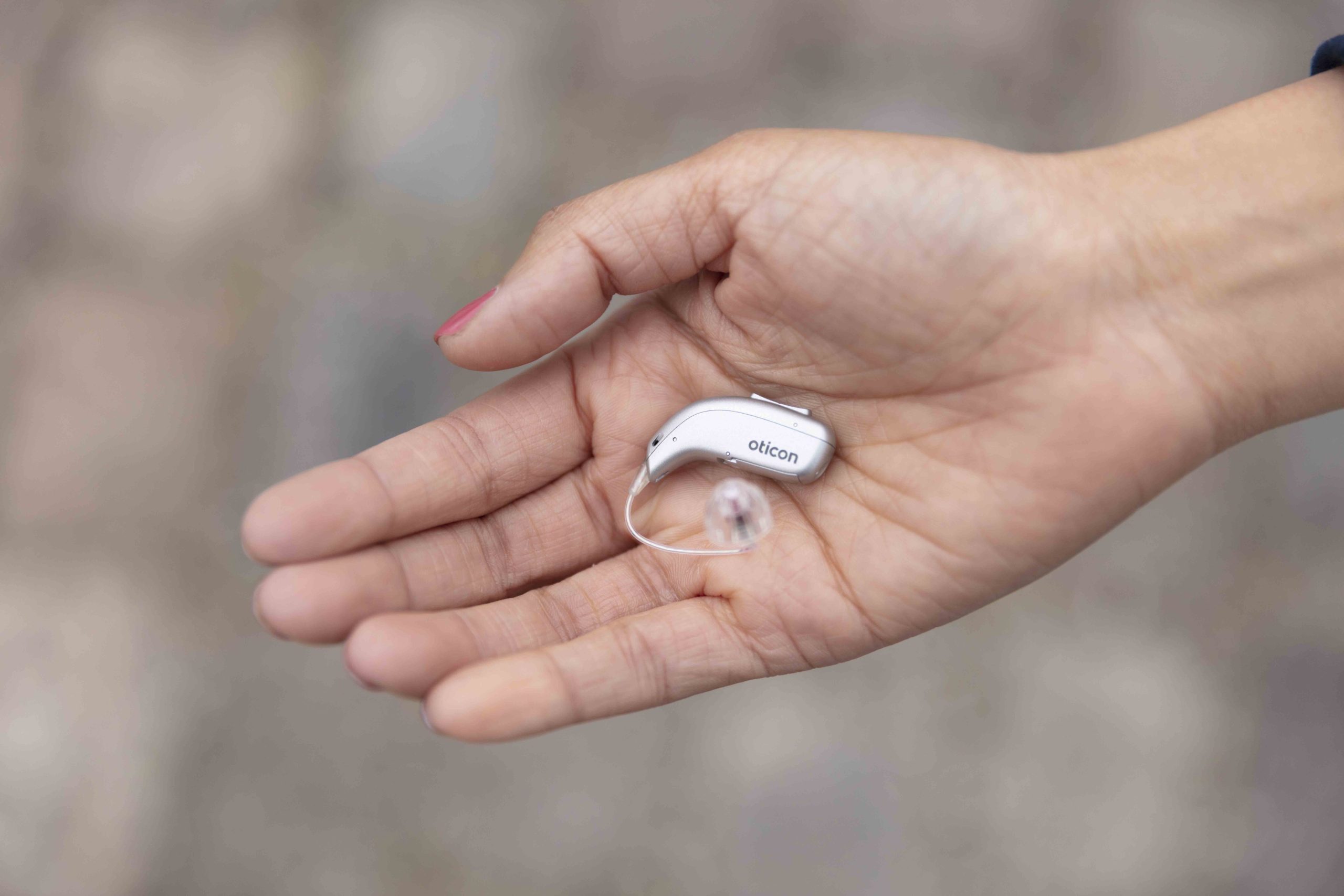One of the secrets to success of wearing hearing aids is learning how to put in hearing aids properly.
If hearing aids are not inserted correctly, they may fall out, hurt the ear, and not provide the benefit of amplification no matter how advanced your hearing aid is.
Custom hearing devices are molded to ears specifically. They are placed in your ears just like doing a jigsaw puzzle. Custom hearing aids fit securely because they don’t compete with glasses or the elastic face mask loops. The anatomy of a patient’s ear canal and the shape and length of the hearing aid canal portion need to be considered when building the hearing aid. A good fit will give both comfort and good sound quality to a patient.
The most popular style of hearing aid for 2021 is the Receiver-in-the ear style (RIC). This type of hearing aid consists of 2 parts. The tiny receiver that goes into the ear and the circuitry that is housed in a tiny case on top of the ear. Some hearing aids are equipped with retention lines to hold the receivers in place while other hearing aids have custom micro-molds to mount the receivers for more precise insertion. Since there is less mass and more venting in the ear canal, the Receiver-in-the-ear style is more comfortable and natural sounding for all day use.
Here is a simplified version of how to insert a RIC hearing aid.
- Place the hearing aid behind the top of the ear, where the handles of glasses go. Let the earwire rest comfortably against the ear, close to your head. Note: Right aid (has a red label for right) use right hand. Left aid (has a blue label for left) use left hand.
- Insert the ear-tip or custom-mold into the ear canal while holding the earwire against the ear. Then tuck the retention line to the bottom bowl part of the ear.
- Run your finger along the earwire and gently push towards your nose to ensure it is seatly properly.
Watch this instructional video for more help.
Don’t attempt to put hearing aids in on your own without in-person instruction first. Stop and contact an audiologist if the hearing aid doesn’t fit properly or causes discomfort, irritation, or redness.
This should be explained in person, with an audiologist guiding a patient through this until it can be done independently. No matter what style the hearing aids is, a professional that knows your ear and your hearing is important for a successful fitting and happy hearing. An audiologist is the best person to help with this process.
by Alice Leung, Au.D. Doctor of Audiology


